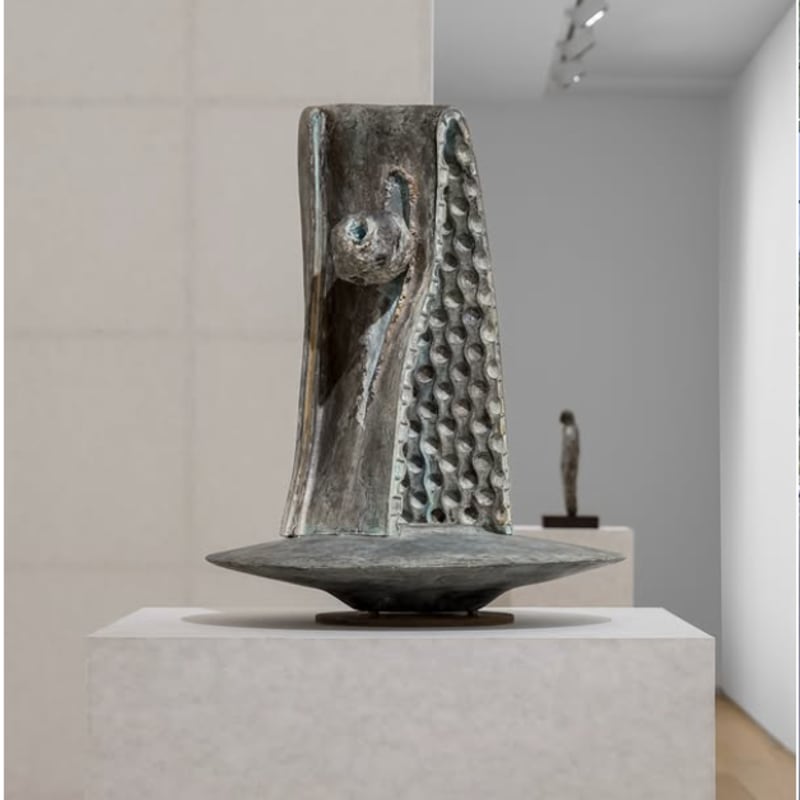Donald Judd Foundation Prints: 1992
Judd Foundation is presenting Prints: 1992, an exhibition of a set of an edition of prints by Donald Judd on the ground floor of 101 Spring Street in New York. The exhibition is the first presentation of these prints in New York.
In the spring of 1991, Judd travelled to South Korea for a solo exhibition of his works in three-dimensions at Inkong Gallery in Seoul. The gallery invited Judd to make a set of prints for a forthcoming exhibition, for which Judd selected a local paper to make this edition. The paper, known as hanji, is made from the inner bark of a mulberry plant that is native to Korea’s rocky mountainsides. The prints have previously been exhibited in The Haags Gemeentemuseum, Hague, Netherlands in 1993; the Itami City Museum of Art, Itami, Japan in 2001; and at the Chinati Foundation, Marfa, Texas in 2013.
This edition of twenty woodcut prints, comprised of ten pairs, is one of the largest series of prints made by Judd. Each pair has one impression with a printed frame of colour and one where the same colour is reversed and printed as the interior space of the frame. The dividing vertical and horizontal lines are specific to each pair, creating proportions of 1:2, 1:3, 1:4, and 1:5. The grain of the mahogany block is a prominent element of the large blocks of colour. Whereas in his earlier prints Judd regularly printed in one or two colours, by the mid-1980s he began using multiple colours in his woodcuts. He made a similar shift towards the use of numerous colours in his three-dimensional work in the early 1980s with the development of pieces in painted aluminium. This set of prints reflects Judd’s most extensive use of colour in his print practice, with ten colours used across the set: cadmium red, cadmium yellow, cadmium orange, ultramarine blue, cerulean blue, cobalt blue, permanent green, viridian green, black, and alizarin crimson.
Judd made his first prints in 1951 while studying at the Art Students League in New York. Working first with lithographs, woodcuts became his dominant print medium as early as 1953. Judd also worked with aquatint, etching and screen print techniques, often using multiple techniques to create prints with similar formal qualities. He used the parallelogram, for example, in his three-dimensional works, woodcuts, etchings, and aquatints. Judd’s prints, like his works in three-dimensions, explore symmetry, proportion, seriality, and colour combinations. As he wrote in his 1985 essay, “Symmetry,” the distinction between symmetry and asymmetry arose in his work when the lines of his painting and prints which had been organic, and then curved, later became straight. “This change divided a painting into two parts, the large broad rectangle and the narrow lines,” creating “the problem of where to place them.” Over time, the question of line and symmetry became central to Judd’s print practice.
In the 1960s and 1970s, Judd’s prints concentrated on monochromatic series. In 1986, Judd developed a set of four woodcuts with a rectangular field of colour printed in brown, blue, red, and green – the first set to contain multiple colours. Each sheet measured 60 x 80 cm, a 3:4 ratio that he worked with consistently from then on. As Marietta Josephus Jitta editor of the catalogue raisonné, Donald Judd: Prints and Works in Editions, wrote in the essay “On Series” in that volume, “The series has something of a declaration. It is simple and almost challenging like the red and blue parallelogram of twenty years earlier. In his graphical work, the series is continually referred to as the basis for new research on the flat surface.” Many of Judd’s later prints, including untitled, 1992-93, on view in this exhibition, built upon the formal innovation of the central rectangle of colour first used in 1986.
In March, Judd Foundation will publish Donald Judd Spaces, the first visual survey of the spaces which comprise Judd Foundation in New York and Texas. It will also expand access to its 101 Spring Street location, introducing guided visits on Sundays and enabling more visitors to directly engage with Judd’s legacy through his formerly private living and working spaces in downtown New York.
For more information about the publication, click here.
For more information about the expanded access, click here.


















































































































































































